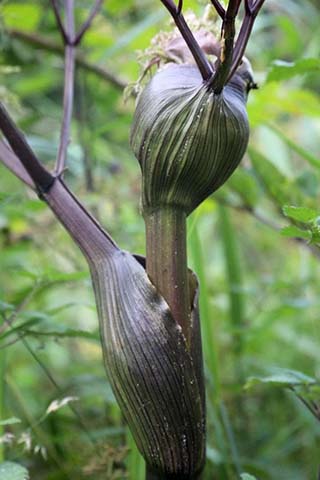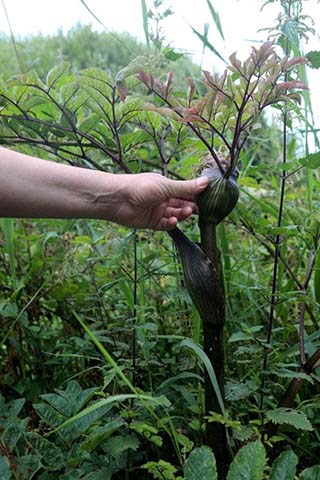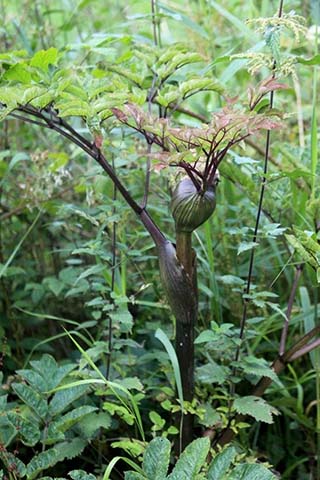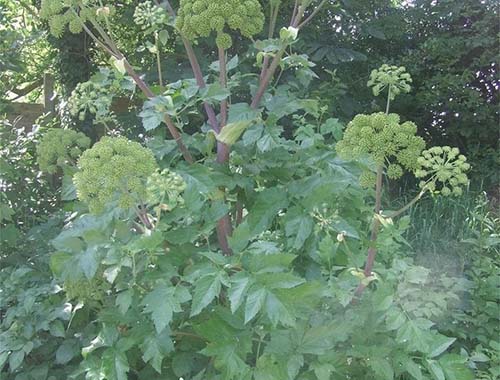Be ‘In-Tune’ with Nature
Enjoying the quiet time of winter
Krysia Soutar
It is still wintertime here in the North West Pennine hills. As I look out of my kitchen window, I see snow covering the ground and wild roe deer grazing in the woods opposite our garden. Everything seems serene and peaceful. Outside, nature is carrying on with her own business. It is only us humans who are having to adjust to serious challenges in society; everything is changing, nothing is the same as before. The current pandemic is threatening our way of life. Of course, many of us have been questioning our lifestyles. In our permaculture courses we teach an underpinning way of life which works with nature and not against her. We try to foster an attitude of “We can do this: we can be a force for the good of the planet and for our human society at large”.
 |
| Midwinter with deer grazing in the distance |
 |
Each and everyone of us can contribute to a new way of being. It is certainly a time to reflect and review how we are living our lives. We now know that the current way of life is causing serious health problems as well as planetary ones, especially in relation to how we source and produce our food, water and clothing. Our economies are founded on greed with unsustainable systems that will eventually crash, with no concern for the consequences.
Every single system in society today has to change towards life-supporting regenerative ways of being and doing. Those of us who have studied permaculture are already aware of the need to move towards a ‘bioregional’ approach to sourcing our food and resources. Kirkpatrick Sale, in his book Dwellers In The Land says “I think it is possible to deduce...the central principles by which to construct the guiding tenets of an ecological world”.
There is a lot of work to be done in this area, and time is short, so I sincerely hope that those who have the skills will start to map out their local bioregions with all that that entails. This will provide an essential resource for our future planning - where the water sources are, what kind of foods might be grown, what kinds of flora can be sourced for medicines, cloth, utensils and so on.
Our ‘Real Wealth’ is to be found in the land and the regions within which we live.
Staying healthy
Our internal organs that need particular support during the winter are our kidneys/bladder, as I have written in a previous issue. Keep your lower back warm. Take time to rest and recuperate your kidney energy during the winter. The element within the five transformations associated with winter is water. Water is precious; without it there is no life. Life began in water. Prior to our birth, we lived within a world of water before we emerged into the world of air.
The forgotten prayer
I would like to share this with you: our current society has forgotten to acknowledge the spirit of the Feminine. When I pray to “Our Father” I also whisper this prayer to ‘ Our Mother’. We need both energies to heal our planet and ourselves. I will write more about this in future issues.
“And after this manner pray to your Earthly Mother.
"Our Mother which art upon earth, hallowed be thy name.
Thy kingdom come, and thy will be done in us, as it is in thee.
As thou sendest every day thy angels, send them to us also.
Forgive us our sins, as we atone all our sins against thee.
And lead us not into sickness, but deliver us from all evil,
for thine is the earth, the body, and the health.
Amen.”
The Gospel of Peace Of Jesus Christ by the disciple John
(Aramaic and Old Slavonic Text Compared and edited by Edmond Szekely.)
 |
 |
Recipe for Winter - Beetroot vegetable soup
- 2 organic beetroots
- 1 large carrot
- 2 sticks of celery
- 1 large onion
- sea salt
- parsley
Method
- Wash and peel beetroots and dice into small pieces.
- Wash celery and carrot and dice small.
- Dice onion into small pieces
- Add a small amount of hemp or oil of your choice to pot
- Sauté onion, carrot and celery for approximately 10 mins
- Add 6 cups water to pot
- Add beetroot, bring to boil and simmer gently for approx. 35mins
- Season with sea salt and preferred herbs
Blend and garnish with parsley, add teaspoon or two of Kefir or yogurt
 |
Krysia Soutar, CertEd, has the Diploma in Applied Permaculture Design and teaches Permaculture Design. She is a health coach, qualified to Kushi Institute Level 2.
Angelica the medicine of Angels
Edwina Hodkinson
The year turns and the season changes. It’s hardly noticeable at first as it’s still cold and the land bare, but something feels different in us. Deep fire stirring as the energy of the earth starts to rise and we yearn to shake off the lethargy of winter and plan for brighter days ahead. We’re still in the lockdown of a pandemic. It feels restricting and often difficult to navigate at times, but our distant ancestors were no stranger to plague, contagion or even the solitude of being quietly at home to protect health and stay warm. With the quickening of spring comes a rising of our sap and we instinctively want to shake off the sluggishness of the still winter survival energy and awaken for spring. Its often told by native people that bears awakening from hibernation seek out the oily, nutritious roots of certain plants that feed the adrenal gland to help awaken their body, to give it a warming energy boost, to improve the circulation, the digestion and to provide the vitality needed to shake of the winter sleep. They called this bear medicine. Angelica is bear medicine.
It’s an odd time of the year herb wise if we are wild crafting, we wait for the first shoots of spring that awaken and cleanse the body, providing a nutrition boost after a lean winter. These new shoots are not here yet in the north, but we do have some winter roots, that are not quite indigenous but are easily grown in our gardens. Angelica. A herb highly revered by people of the North. When the Vikings invaded they brought with them Angelica, it was so important and even today it grows all over the Orkney islands, being part of the flavouring of their Kirkjuvagr Gin. Whilst our native wild Angelica Angelica silvestris grows in abundance all over the north west in boggy places, we tend to use the garden Angelica in medicines. It has much of the same properties is but not as dramatic looking or as powerful.
Angelica Angelica archangelica is the herb of Angels. It got its name after an Archangel appeared to a monk during the Black Death declaring how Angelica would protect them from this lethal disease and that Angelica placed between the teeth would be sufficient protection against this terrible plague. It was apparently used in the original Four Thieves vinegar and is a valuable herb used by the Sami for protection against winter viruses and as a chest medicine. A herb for today.
 |
 |
 |
 |
 |
 |
One of the Old Northern European names for Angelica is “Chest wort.” Work with it and you will soon feel its medicine. It dries and warms the lungs, improving pulmonary circulation. It’s good for nourishing lung tissue and can help with expectorating sputum, that may be deeply embedded in the lungs, infected or being produced in copious amounts. It’s decongesting and also good for sore throats and fevers too. Its warmth is great in a hot tea for those with fevers when you just can’t get warm as it increases the circulation and opens the pores to help a person sweat, cool the body and bring down a fever naturally. On teaching our online Weeds and Wild Medicine course we did a guided tasting with Angelica, it was amazing to see how readily people were feeling Angelica’s deeply penetrating lung clearing affects as well as it decongesting sinuses. I’m not sure how traditional it would be in Lapland, but Angelica certainly makes an amazing chest or sinus rub made with leaves and seeds to which essential oils can be added.
Like many superb chest herbs, Angelica is also a magnificent, stimulating, digestive tonic. Being a warming, aromatic bitter, it’s good for a weak digestion, encouraging the production of stomach acid and for enhancing other digestive functions. It’s particularly helpful when stomach acid is low which is often seen in people as they get older. Low stomach acid is common and gives very similar symptoms to elevated levels of stomach acid. Angelica is also an anti spasmodic so great for wind, colic and bloating. Angelica is also a key ingredient in Swedish bitters which are famous tonic for improving general health.
It’s good to learn that Angelica improves circulation through the Liver, protecting hepatic cells from injury. I find it interesting to learn that in the cold, dark, northern lands where alcoholism is seen as a big problem, Angelica is traditionally used to help people come off alcohol, as whilst it is protective to the liver, it can also help to stop the craving. Traditionally the seeds are chewed when the craving occurs.
Other traditional uses for Angelica are in regulating periods, for gout and arthritis, urinary infections and for increasing the circulation.
 |
 |
Often when I feel low in energy, I sip a teaspoon of Angelica tincture or just chew on pieces of dried root. Angelica can be a great pick me up, and good for helping promote mental clarity as it apparently increases circulation to the head. It’s a strengthening nerve tonic and good for elevating low moods and depression. It’s also great adrenal support too.
American Herbalist Jim Macdonald says its good herb to use when you are “so despondent you can’t even pray.” I put Angelica flower essence in some of my medicines for patients who feel low and floored by life’s tough challenges, it seems to help. It just feels good to work with Angelica. American Herbalist ; Matthew Wood likens Angelica to “Bear Medicine.” as according to Native American medicine traditions, the root is brown, furry, oily and pungent. He says that bears eat such roots in spring after hibernation to start building up their body mass. Angelica’s oiliness supports the adrenal cortex to increase energy, appetite, digestion and nutrition. I personally find it effective in medicines for people that are fatigued and run down. Angelica is also good for depression and low mood, particularly that which we feel in deep winter, and I imagine in third lockdown too. Angelica can help calm the mind, open up the imagination and bring people into the dream time” It’s interesting to learn that Angelica has been used for shamanic work with the Sami people, in traditional saunas in Scandinavia and also in some native American sweat lodges. Traditionally the roots are burnt and the aromatic smoke can open up the peripheral circulation to help perspiration and also open up the mind and imagination for more spiritual work.
All parts of Angelica can be used. Leaf, seeds, root and stem. A medicine available all year round and in winter the roots would have been readily available, and they dry well. The Sami traditionally carry it in a pouch, as a preventative medicine as well as being used for medical problems. It is chewed and also smoked in a pipe made from its own stem or put in coffee. It’s interesting to learn that they used the stem of angelica as a musical instrument called a Fadno.
So, if you get some room in your garden or allotment, grow some Angelica. It’s easy to grow and such an amazing medicine with a lot of history.
Angelica tea
For every 1 teaspoon of Angelica root use 1 cup of hot water. Place in a pan, cover bring to the boil, simmer for 10 minutes. Leave to steep for half and hour to and hour, strain and drink. It might be time effective to make all doses for the day in one go. Take one cup 3 times day.
Cautions: Not to be given in pregnancy and can cause photosensitivity so avoid using when sunbathing or when using sun lamps. Also stop using 1 week before planned surgery.
Bibliography
Edwards, Gail Faith (2000) Opening our Wild hearts to the Healing Herbs. Ash Tree Publishing, New York Fischer-Rizzi, S. (1996) Medicine of the Earth; Rudra Press; Portland McIntyre, A (2010) Herbal tutor; A structured course to achieve professional expertise, London: Octopus publishing. Robertsdottir: A.R. (2016) Icelandic Herbs, and their medicinal uses. North Atlantic Books, California. Wood, Matthew (2008) Earthwise Herbal; A Complete Guide to Old World Medicinal Plants: North Atlantic Books, California on the Sami
Thanks to Nikki Darrell for her kind permission for use of the Angelica photograph.)
Edwina Hodkinson BSc(Hons) is a qualified medical herbalist and is a member of the National Institute of Herbal Medicine (MIMH)